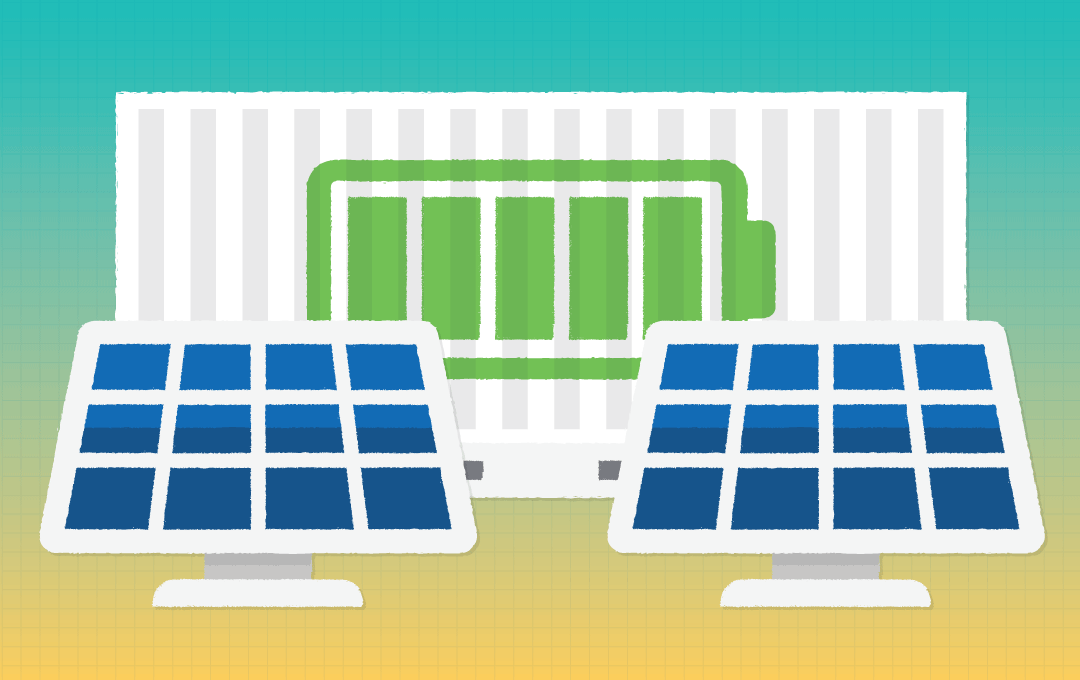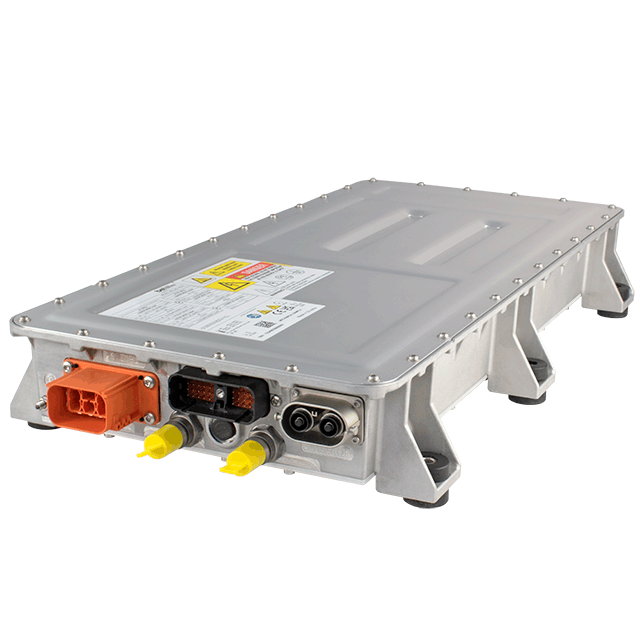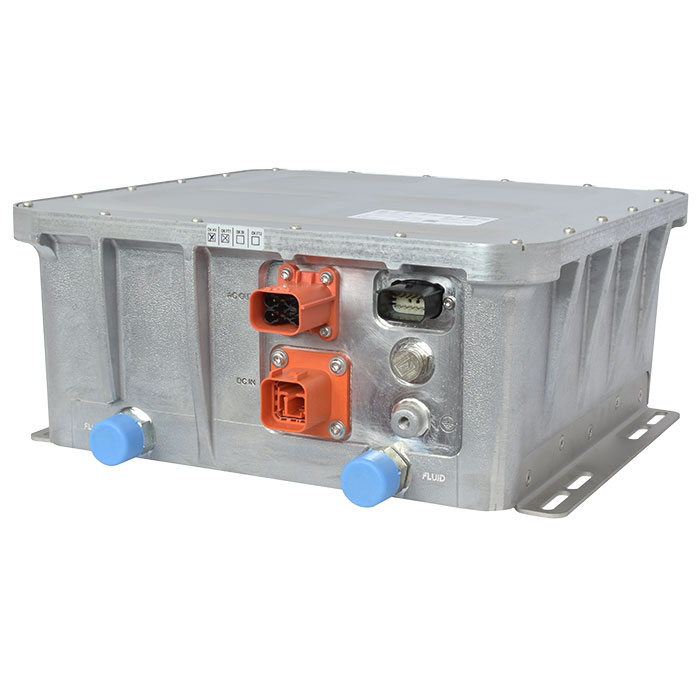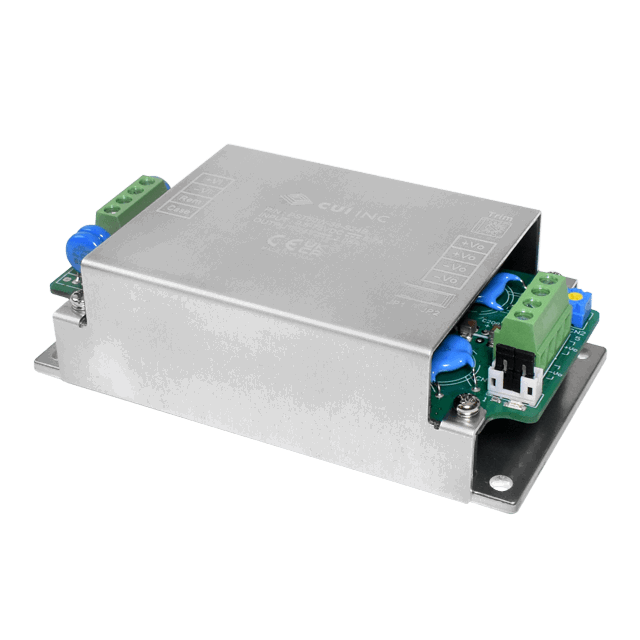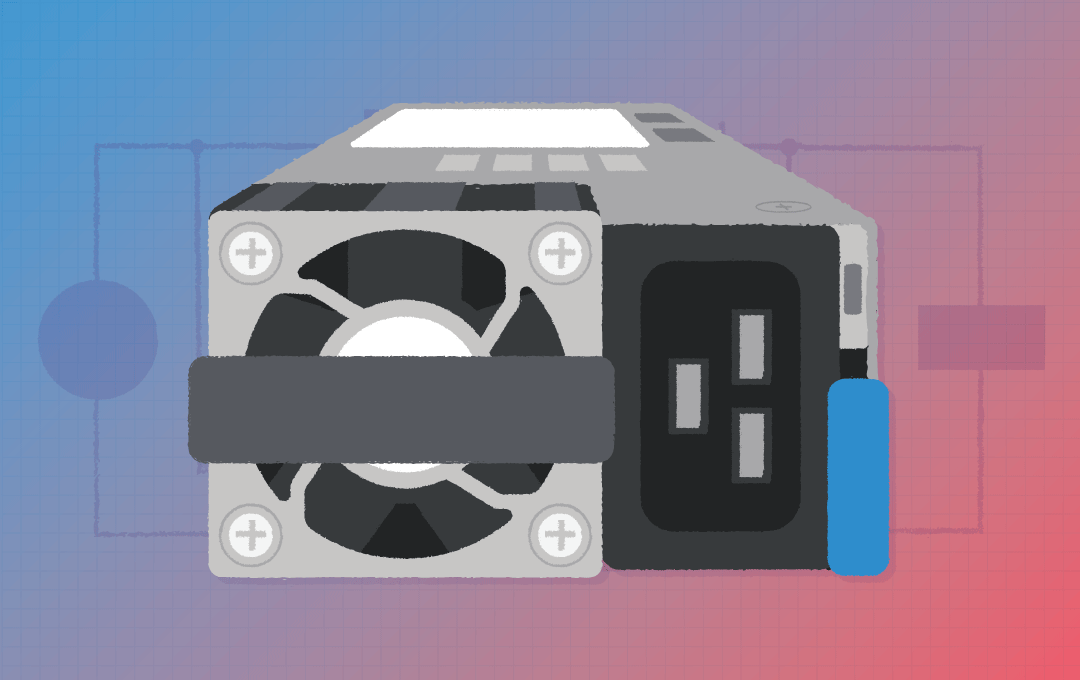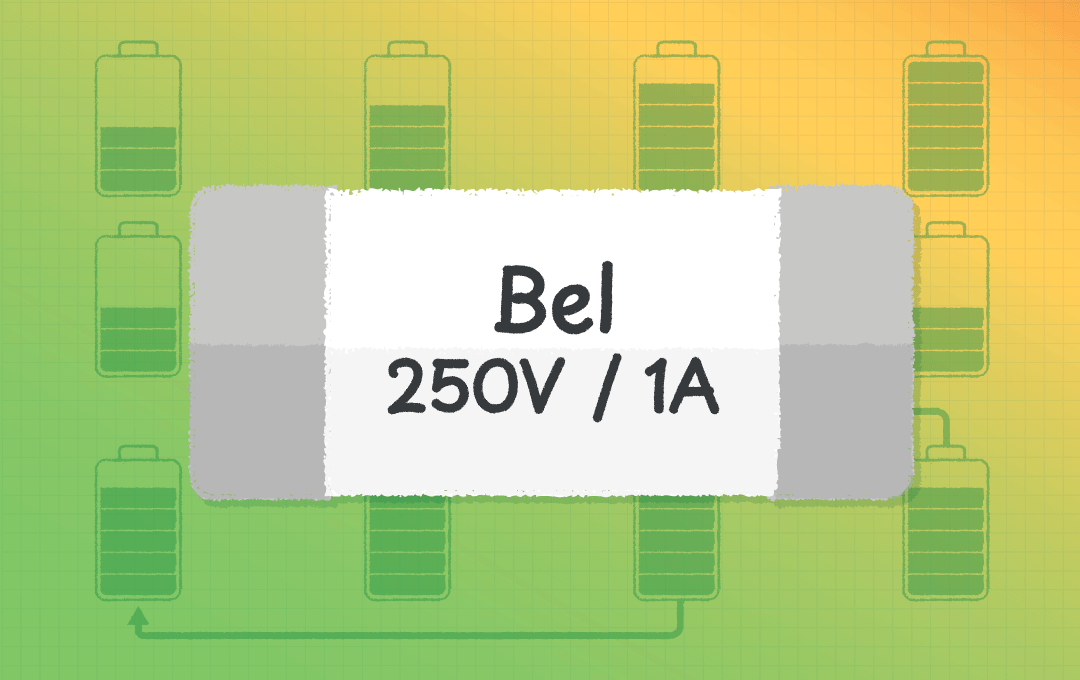Battery Technologies are Evolving
The world of battery technologies has undergone a notable transformation over the last decade. As industries and daily life have continued to evolve, the nature of energy generation has also shifted, placing more emphasis on renewable sources such as solar and wind power.
Batteries have played a crucial role in accommodating these changes. However, older technologies such as lead acid and nickel-cadmium have shown to be woefully inadequate for these new applications. It is for this reason that new battery technologies continue to develop. Lithium-ion batteries have emerged as the current dominant technology, offering improved energy densities, cycle life, and reliability. Meanwhile, lower-cost alternatives to lithium, such as sodium-sulphur, are also being developed.
| Storage Technology | Capital Cost ($/kWh) | Volumetric Density (Wh/L) | Power Density (W/kg) | Efficiency (%) | Applications |
|---|---|---|---|---|---|
| Lead-acid Batteries | $350-1500 | 50-100 | 50-200 | 70-76 | Datacenters, telecom, hospitals, residential backup systems |
| Sodium Sulphur Batteries | $300-950 | 150-300 | 150-250 | 85-90 | Wind and solar farms, emergency power systems |
| Lithium-ion Batteries | $850-5000 | 250-700 | 100-250 | > 90 | Laptops, smartphones, EVs, backup systems |
| Flow Batteries | $180-250 | 30-60 | 30-150 | 75-85 | Microgrids, long-duration renewable storage |
Table 1: A Comparison of Common Energy Storage Technologies
What is BESS?
Battery Energy Storage Systems (BESS) are systems that use battery technology to store electrical energy for later use. They typically consist of a collection of battery units, associated power electronics, control systems, and safety equipment, which are used to store, manage, and release energy. While these devices can be found in a wide range of applications, they are often integrated into the grid or used in remote locations to provide services such as load-balancing, peak-shaving, backup, and off-grid power.
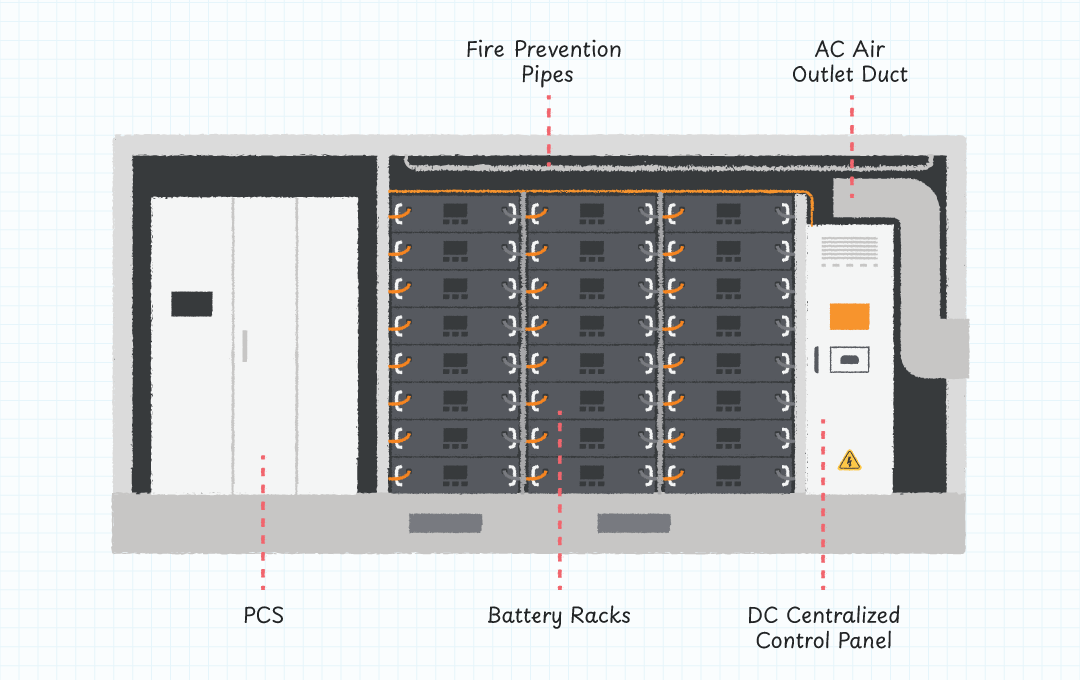
Use Cases of BESS
BESS have become increasingly popular in modern renewable energy systems and are often integrated locally. By storing excess energy during times of high production, BESS can provide power back to the grid when production is low to provide consistent power despite inconsistent power generation. This helps maintain stability and prevent brownouts and power outages caused by the slow response of a typical power distribution network. This makes BESS an essential component in modern grid management systems.
| Application | Typical Size (kWh) | Use Cases | Battery Technologies Used |
|---|---|---|---|
| Residential | 5 kWh - 20 kWh | Backup power, load-shifting, energy optimization | Lithium-ion, Lead-acid |
| Commercial & Industrial | 100 kWh - Several MWh | Energy arbitrage, demand response, backup power | Lithium-ion, Flow batteries, Sodium-sulfur |
| Utility-Scale | Several MWh - 100+ MWh | Grid stabilization, peak shaving, renewable integration | Lithium-ion, Flow batteries, Sodium-sulfur |
| Mobile/Off-Grid/Micro-Grid | 1 kWh - Several MWh | Remote power, off-grid living, micro-grid applications | Lithium-ion, Lead-acid, Flow batteries |
Table 2: Common Applications, Power Levels, and Benefits of BESS
Moreover, BESS can be utilized in mobile power applications, such as large-scale portable generators, which are ideal for temporary power needs on construction sites and remote locations where access to mains energy is limited.
Challenges of Power Conversion in BESS
One of the primary challenges faced by BESS is the inefficiency of traditional power technologies. For decades, in order for BESS to obtain usable efficiencies and power capabilities, engineers would have to make sacrifices in the final design’s weight, size, and cost. While this may not have been a serious issue for fixed installations, any mobile application would see serious drawbacks. By contrast, modern designs are able to take advantage of newer wide band-gap technologies, which are able to reduce size and weight while increasing efficiency and power.
Traditional power electronic technologies are often physically large, making it challenging to develop high-density storage solutions. This physical size also contributes to the high cost of BESS, as larger systems are often needed to meet modern energy and power demands.
This is in part due to the one-directional nature of typical battery chargers. Unlike modern bidirectional solutions, older systems can only transmit power in one direction, from the AC grid to the DC battery voltage, necessitating a separate DC to AC inverter to export the battery power back to the grid. This design limitation increases the cost, complexity, and size of the BESS.
What is Bidirectional Charging (BDC)?
Bidirectional Charging refers to a charging system that allows the flow of electricity to occur in both directions: from the grid to a battery for charging, and from the battery back to the grid or to other loads for discharging. Unlike traditional power management systems, which require separate power conversion circuits for charging and discharging, BDC utilizes a single circuit that can handle both AC/DC and DC/AC operations.
BDCs offer many benefits compared to traditional uni-directional power electronics:
- Lower space, weight, power, and cost (SWaP-C)
- Less complex and easier to implement
- Easily paralleled for scalability
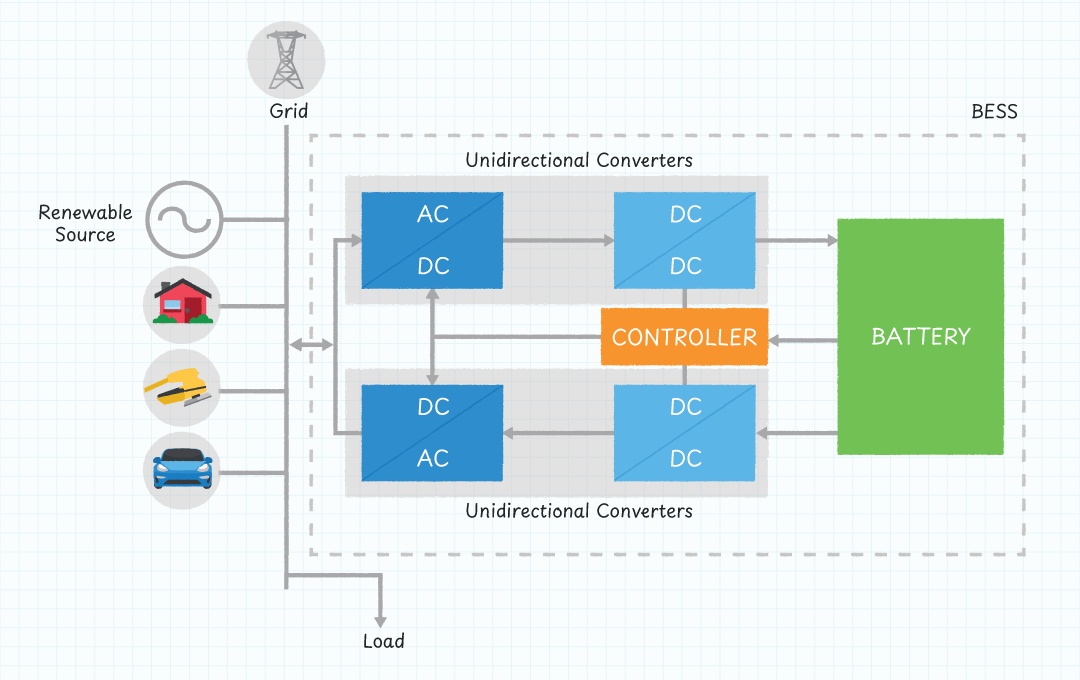
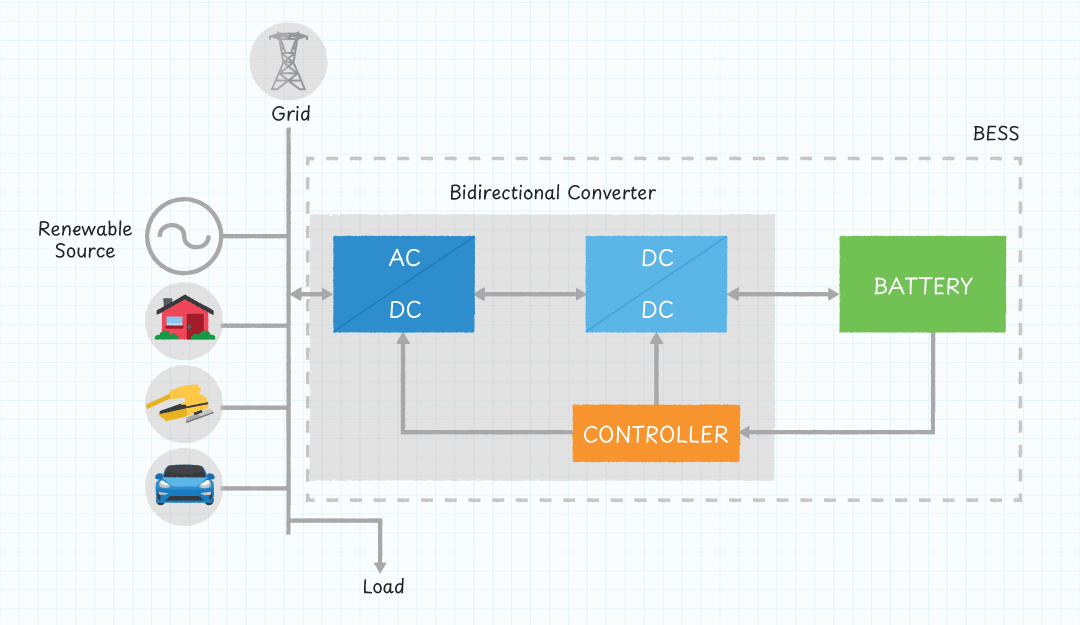
BDC’s Enable New BESS Applications
One of the most exciting aspects of BDC is its ability to enable devices, which traditionally do not provide power feedback to the grid, to do so. For instance, as EVs become increasingly popular, grid operators can leverage connected EVs as a decentralized power storage system. During periods of excess energy production, EVs can be charged, and when energy demand peaks, these vehicles can provide grid stability by feeding power back into the grid.
The benefits of BDC extend far beyond grid management. In the field of mobile power solutions, BDC circuitry can notably enhance the performance of battery systems. For example, shipping container battery systems are commonly used in remote locations to provide power for various applications. In these applications, space is at a premium, and minimizing the size of power electronics is critical in maximizing the energy density of the system. BDCs eliminate the need for separate power import and export systems, saving space that can be used for additional battery cells.
These systems are designed to be charged, shipped out to remote areas, utilized for a specific period, and then returned to the charging station for replenishment. By incorporating BDC circuitry, the weight of each charging and discharging unit can be reduced, allowing for the inclusion of more battery cells and increasing the overall energy capacity of the system.
The Future of BESS
The rapid advancement of battery technologies has dramatically changed the energy landscape, with BESS playing a critical role in stabilizing power grids and making renewable energy a reliable source of power.
The integration of BDCs into BESS systems presents a unique opportunity to maximize renewable energy utilization while minimizing fossil fuel reliance.
BDCs in BESS systems also offer notable economic advantages. By reducing infrastructure costs and improving energy efficiency, BDCs can help lower the overall cost of energy storage systems. This, in turn, can lead to increased adoption rates of renewable energy sources, which are often more cost-effective in the long run compared to fossil fuels.
Embrace the next generation of energy storage with Bel's battery charging solutions.

